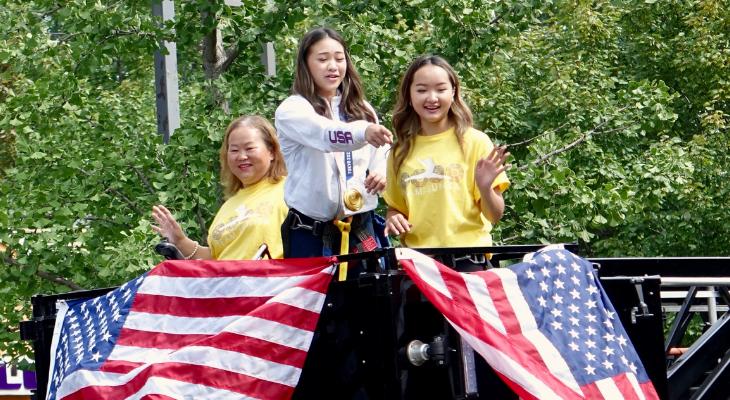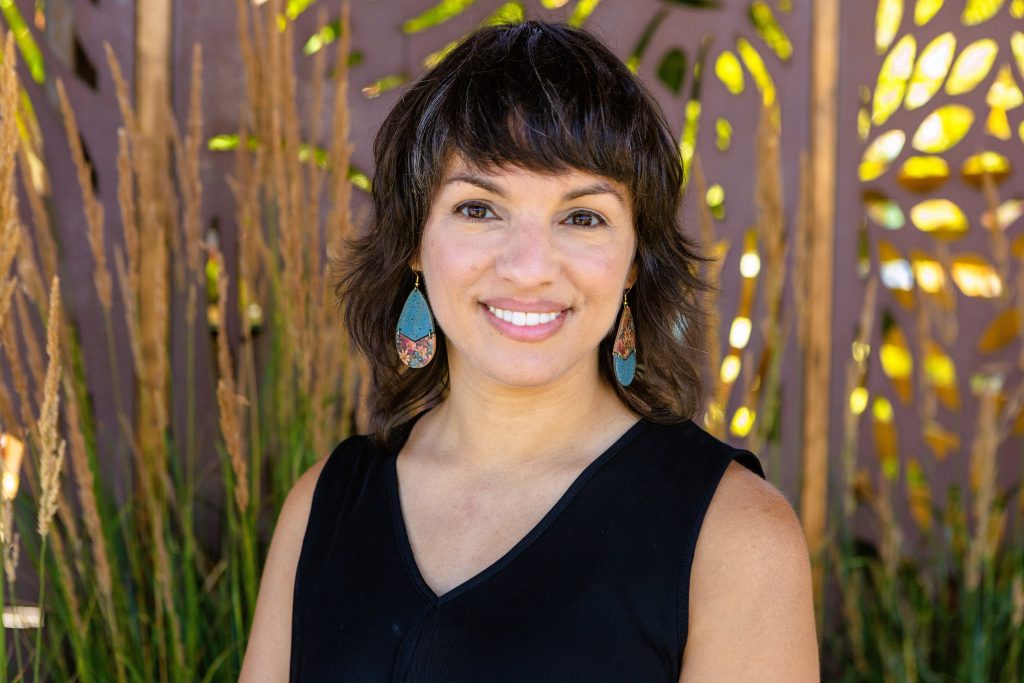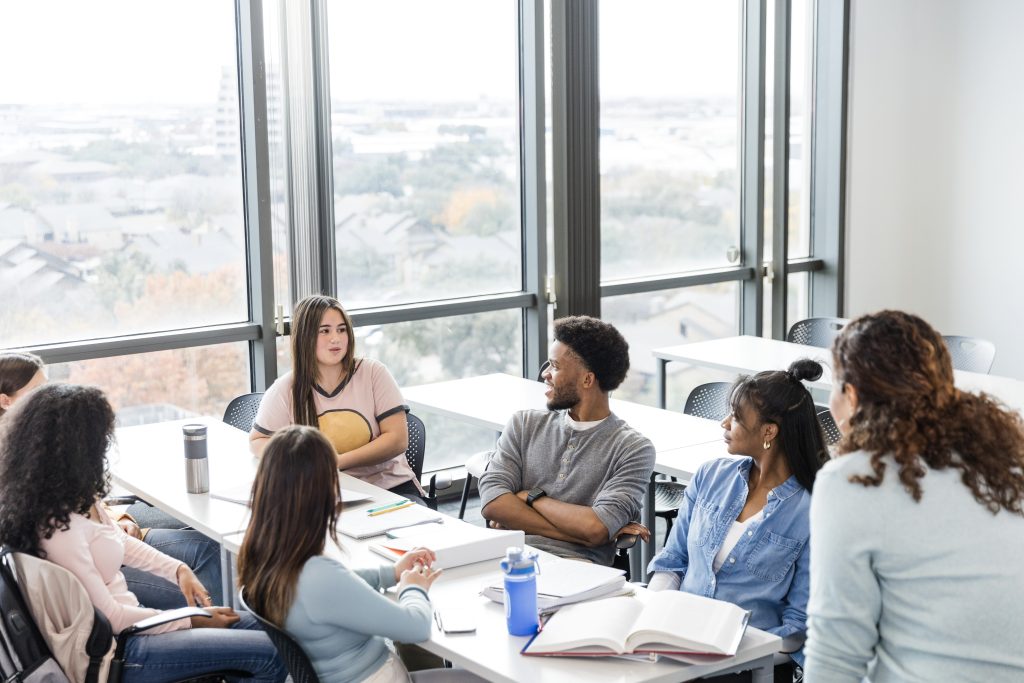Suni Lee’s Gold Medal Shines Light on Hmong Spirituality
August 12, 2021

Before the national anthem played at her Olympic gold medal ceremony last month, American gymnast Suni Lee called her family on Facetime. Surrounded by members of their St. Paul, Minn., community, they had just watched her win the women’s all-around competition. Lee is the first Asian American woman to win the title.
“I did it,” she told them. “We did it.”
“They support me so much,” she said in an interview the next day, recalling how her Hmong friends and neighbors had raised money to support her training and her father’s recovery after a serious injury. “If we ever need anything, they’re just so supportive of my whole family.”
Phillipe Thao was also watching from St. Paul, Minn. For 25-year-old Thao, and anyone else familiar with Hmong religion and culture, Lee’s comments were profound. In Hmong tradition, strong community and family ties are deeply intertwined with notions of spirituality. For Thao, Lee’s triumph felt like a communal victory.
Thao and Lee share more than the same hometown; they share a common religion and culture. Their grandparents were Hmong refugees, part of a wave of tens of thousands of people who in the wake of the Vietnam War endured a forced migration, refugee camps, poverty and resettlement in the United States. Lee’s Olympic performance was more than a platform for the 18-year-old gymnast. It also elevated the profile of the Hmong community, including 25-year-old Thao.
A few years ago, Thao thought of his ancestors as he stood on a mile-long bridge spanning the fast-moving waters of the Mekong River, the same river his grandparents swam across more than 40 years ago, forced from their homeland in Laos during a brutal war. Thao thought of them again a few weeks ago as he watched Lee’s historic win at the Olympic Games in Tokyo.
“To see someone like Suni Lee who has made it onto a global stage, who is a descendant of all these generations to the ancestors crossing the Mekong River” was a thrill, Thao said. “Had one of her ancestors had not made it across that river, these generations would not exist.”
Soon after Lee won gold, Thao, a copywriter for Crate & Barrel’s marketing department, wrote a moving essay for the Washington Post about growing up Hmong and his community’s joyful response to her victory. Thao met Lee at a recent Hmong New Year celebration in St. Paul, and traditional Hmong practices — including blessing rituals and fundraisers for families in need – have been part of their upbringing.
Hmong religious and cultural practices are based in Shamanism, and the grandchildren of the first wave of Hmong refugees — such as Thao and Lee — are now navigating how to connect with these traditions. This is especially true in communities such as St. Paul, Minn., and Madison, Wis., where large numbers of Hmong refugees settled after the Vietnam war. The Hmong population in Laos, which fought with American soldiers during the so-called “Secret War” against communist forces, faced brutal retaliation when American troops left the country.
“It’s very spiritual, the way I connect with my shamanism background or my ancestors. Their spirits still stay with us as a gift,” Thao says. “That’s how we’re always connected generation after generation. The spiritual part really hits home to me. My first time having a grasp on shamanism was when I was a little kid, and (family members) were killing the chicken to prepare a meal for our ancestors to come down. You have to pull out the seats to let the spirits down. My cousin was like, ‘You can’t sit there, grandma’s spirit is sitting there right now!’ I was so excited. I had never met her.”
While Thao says he does not consider himself traditionally religious, he says he finds meaning in these traditions. “A big part of our belief is worshipping our ancestors, and after their passing, if you’re ever in need or if there’s a big celebration, you always look to them, prepare a feast, sacrifice an animal, and their spirits come down to your home,” Thao explains. “Before a big college exam or any big job interview I’ll always just pray to their spirits and ask for help, or we’ll prepare a Hmong meal with chicken and call their spirits down as a way of giving thanks.”
Melissa Borja is a professor at University of Michigan who specializes in Asian American studies, religion and politics. She read Thao’s essay and has been following Suni Lee’s story closely.
“What I’ve seen in the wake of her victory is greater attention to who Hmong Americans are. What I appreciate is she is not portrayed in the media as Asian American, but as specifically Hmong American,” Borja said. “For a lot of time they have been in the United States Hmong Americans have been portrayed in not very positive ways in the media.”
This was in part due to prejudice and a profound lack of understanding of Hmong religion, Borja said. She said she was inspired to study the Hmong community after reading Anne Fadiman’s highly acclaimed 1997 book, “The Spirit Catches You and You Fall Down: A Hmong Child, Her American Doctors and the Collision of Two Cultures.” She takes issue, however, with its subtitle.
“When we emphasize collision or clash, we forget that there are lots of ways where people bring things together that are harmonious,” Borja says. Protestant and Catholic refugee resettlement organizations helped bring Hmong families to the United States, and the Hmong Christian population is growing, she says. Many find ways to blend Hmong traditions with Christian practices. When the first Hmong Catholic priest was ordained in the United States, for example, he participated in a “khi tes” ceremony, a Hmong ceremony that involves tying white strings around the wrist as a form of blessing. News reports noted that Suni Lee’s family participated in a similar ceremony prior to her departure for Tokyo.
Borja notes that many Hmong traditions required trained shamans, and that American Hmong cultural centers now hold classes to train the young generation in their traditions — including blowing a qeej, pronouned “kheng,” a bamboo flute-like instrument that’s viewed as a sacred pipe.
“This is an instrument that young people are merging with their own styles and they’re really creative with it,” Borja says. “At the same time it is a ritual instrument that is really important for funerals. Your grandparent may have played it ‘to lead the soul home’ at a funeral.”
This creativity is evident in the work of Jessi Xiong, a 25-year-old artist from Boston. Xiong grew up in a small, mostly white community in rural Illinois, and they never learned Hmong language. They grew curious about Hmong traditions as they entered college.
“We share a lot of similarities to a lot of indigenous cultures,” Xiong says. “One of my close friends is Native American, specifically Mohawk, and we connect a lot about the feeling that we’re trying to keep this dying culture alive in the face of genocide, and trying to keep our own language alive.”
Xiong interviewed their grandparents as part of a class assignment, then turned the story of their grandmother’s harrowing journey from Laos into a moving short video for an animation class. “I’ve never been a religious person,” Xiong says. “I don’t ascribe to any organized religion, but I am a very empathetic person, and I’m spiritual in my own way. I’m very open to things being out there.”
Xiong has some of their grandparents’ “story cloths,” in their home, a Hmong tradition that weaves stories and images into colorful textiles. And as Xiong trains to be a tattoo artist, they’re finding meaning in Hmong symbols and references.
“I want some mountains on my back, kind of like a landscape,” Xiong says. “Hmong people in Laos, they traveled along the mountains and they mostly lived on the upper elevations. That’s where my grandparents called home, in the mountains. I also want to do something inspired by Hmong tapestries. They often tell stories about the Hmong people, and there are symbols like an elephant’s foot, for example, or a flower.”
Share
Related Articles
American Civic Life
American Civic Life
The Interfaith Legacy of Muhammad Ali: “The Wise Man Changes”
American Civic Life
Is This a Time for Bridgebuilding? 5 Leaders in Conversation



